Scientists reveal the date Earth will face a mass EXTINCTION that wipes out all humans
In 250 million years, humans will become extinct on Earth – but that will happen if we stopped burning fossil fuels now, a grim new study has found.
Computer simulations suggest our planet will face a mass extinction that will wipe out all mammals, experts from the University of Bristol report.
All life forms still living on Earth by then would face temperatures between 40°C and 70°C, they say.
But their calculations do not take into account greenhouse gases emitted from the burning of fossil fuels and other man-made sources – so the date of our demise is likely even earlier.
It would be the first mass extinction since the dinosaurs went extinct about 66 million years ago, when Earth was catastrophically hit by a huge space rock.
Extreme heat will likely wipe out humans and mammals in the distant future, even without the influence of CO2-emitting fossil fuels (artist’s impression)
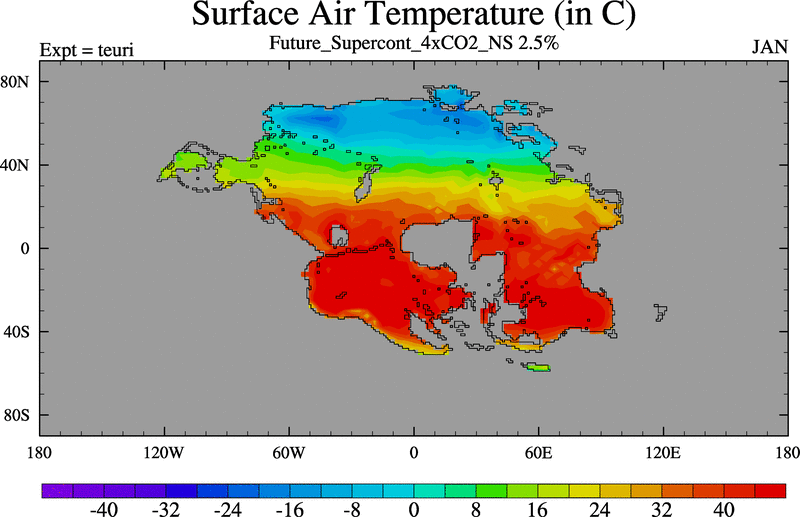
The new study was led by Dr Alexander Farnsworth, senior research fellow at the University of Bristol’s School of Geographical Sciences.
“The prospects in the distant future appear very bleak,” Dr Farnsworth said.
‘Carbon dioxide levels could be double current levels.
‘Humans – like many other species – would die because they are unable to dissipate this heat through sweat, which cools their bodies.’
According to the researchers, in 250 million years, all of Earth’s continents will have merged to form a supercontinent known as Pangea Ultima.
Earth’s land would form the shape of a donut with an inland sea in the middle – all that remains of the once mighty Atlantic Ocean.
The surrounding Pacific Ocean, meanwhile, would take up most of the Earth’s surface.
Pangea Ultima is just one possible projection of what Earth’s supercontinent could look like once plate tectonics converge.
Whatever the exact alignment, scientists are confident that Earth’s continents will slowly merge into one hot, dry, and largely uninhabitable mass.
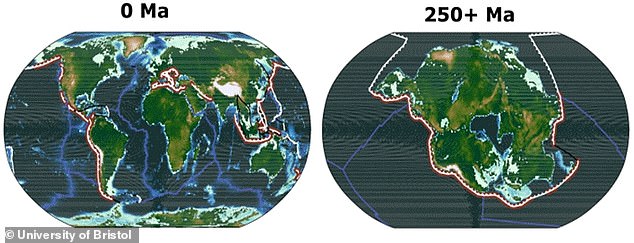
Image shows the geography of the current Earth (left) and the expected geography of the Earth in 250 million years, when all continents merge into one supercontinent (Pangea Ultima)
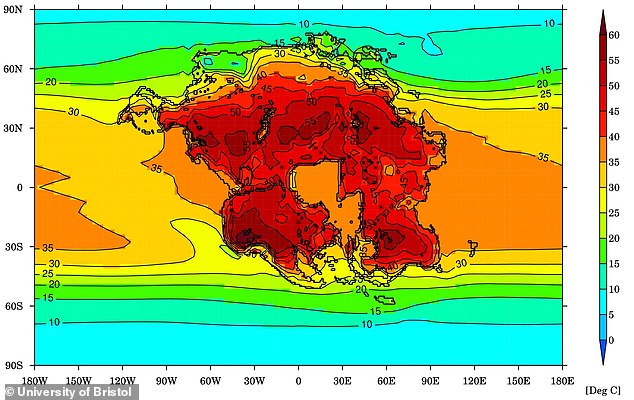
Image shows the warmest monthly average temperature (degrees Celsius) for Earth and the projected supercontinent (Pangea Ultima) in 250 million years, when it would be difficult for almost all mammals to survive
Tectonic processes in the Earth’s crust that brought the continents together would lead to more frequent volcanic eruptions, releasing huge amounts of carbon dioxide (CO2) into the atmosphere, further warming the planet.
Adding to this is another, lesser-known form of global warming: the natural brightening of the sun, causing the planets to steadily get hotter and hotter.
‘The newly emerged supercontinent would essentially deliver a triple whammy, consisting of the continentality effect, a warmer sun and more CO2 in the atmosphere, and increasing heat for much of the planet,’ said Dr Farnsworth.
‘The result is a largely hostile environment with no food and water sources for mammals.
‘Widespread temperatures between 40 and 50 degrees Celsius, and even greater daily extremes, exacerbated by high humidity, would ultimately seal our fate.’
For the study, the scientists used automated climate models to simulate temperature, wind, rainfall and humidity trends for Pangea Ultima.
To estimate future CO2 levels, the team used models of tectonic plate movements, ocean chemistry and more to map CO2 inputs and outputs.
Researchers emphasize that they have not taken into account the contribution of CO2 emissions from the burning of fossil fuels, which are now often cited as the biggest cause of climate change.
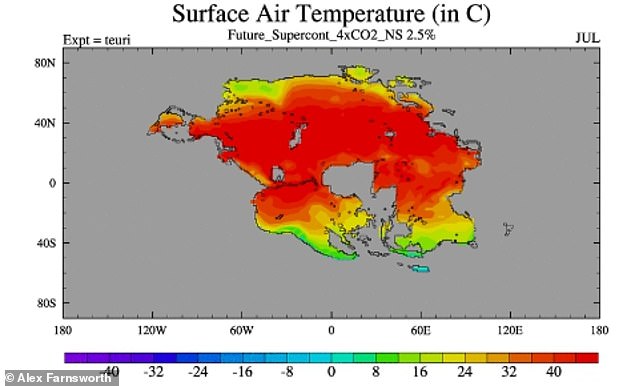
Pictured: Earth’s average monthly surface temperature for Earth 250 million years in the future when all the continents come together to form Pangea Ultima
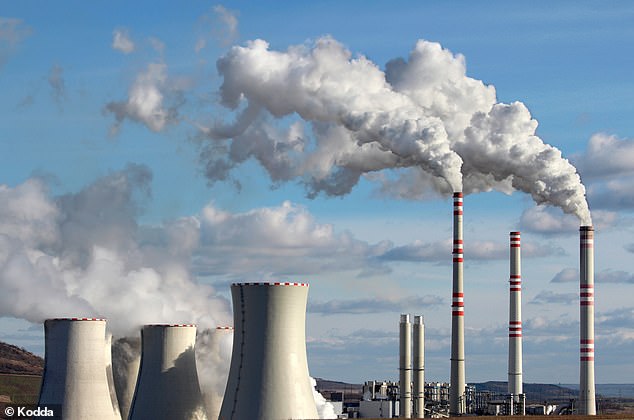
The new calculations do not take into account greenhouse gases emitted from the burning of fossil fuels and other man-made sources – our extinction date is likely even earlier (file photo)
They estimate that CO2 emissions could rise from about 400 parts per million (ppm) today to more than 600 ppm many millions of years in the future.
“This of course assumes that people will stop burning fossil fuels, otherwise we will see these figures much, much sooner,” said co-author Professor Benjamin Mills from the University of Leeds.
Findings indicate that only somewhere between 8 and 16 percent of the land would be habitable for mammals, but all mammal species would likely be wiped out.
To make matters worse, the supercontinent would be located primarily in the hot, humid tropics, which could see much of the planet experiencing higher temperatures than many mammal species would be used to.
‘However, we cannot predict how long humans will exist, if we assume we last that long then such a future world would be inhospitable to us,’ Dr Farnsworth told MailOnline.
The academic said we might be able to survive if we built “environmentally controlled, air-conditioned shelters.”
“But we would probably have to build other facilities to accommodate food production,” he said.
Another hope for humanity is to form civilizations on other planets in other solar systems, but this is just science fiction at the moment.
“(Survival) will all depend on whether we can escape this planet, and if not, do we have the capacity to use geoengineering solutions to control the climate,” Dr Farnsworth said.
The research was published today in Natural Geosciences.
